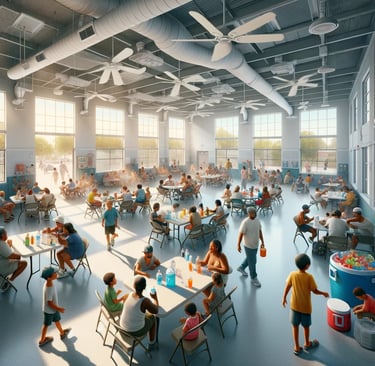Beat the Heat: Effective Strategies for Adapting to Rising Global Temperatures"
Effective Strategies for Adapting to Rising Global Temperatures
zivaiclimate
2/24/20242 min read


As global temperatures continue to set new records, finding ways to adapt has never been more crucial. The impacts of climate change are felt worldwide, prompting individuals, communities, and nations to seek innovative and practical solutions to mitigate the effects of increasing heat. In this blog post, we'll explore actionable strategies that can help people adapt to the rising global temperatures, ensuring safety, sustainability, and resilience in the face of a warming planet.
Embrace Green Infrastructure
Urban areas, notorious for their heat island effect, can benefit significantly from the implementation of green infrastructure. Planting trees and creating green roofs can not only reduce urban temperatures but also improve air quality. Trees provide shade, which lowers surface and air temperatures, making outdoor spaces more comfortable during hot weather.
Upgrade Building Designs
Incorporating climate-smart architecture and design is pivotal in adapting to higher temperatures. Features like better insulation, energy-efficient windows, and light-colored building materials can reduce the need for air conditioning, lower energy costs, and decrease indoor heat. Innovative building designs, including passive cooling techniques, can harness natural ventilation to keep indoor spaces cool.
Invest in Renewable Energy
Transitioning to renewable energy sources, such as solar and wind power, reduces greenhouse gas emissions, a key factor in global warming. Solar panels, for instance, not only generate clean energy but can also shield buildings from direct sunlight, contributing to cooler indoor temperatures.
Water Conservation and Management
Efficient water use and management strategies become increasingly important as temperatures rise and freshwater supplies become more stressed. Implementing water-saving techniques, such as rainwater harvesting and drip irrigation, can ensure water availability for agriculture and daily use while preserving critical resources.
Foster Community Cooling Centers
Establishing community cooling centers in public buildings like libraries, schools, and community centers can provide respite during extreme heat events, especially for vulnerable populations. These centers can offer a safe space for people to cool off, thereby reducing the risk of heat-related illnesses.
Enhance Weather Preparedness
Staying informed about weather forecasts and heat advisories is essential for planning and preparedness. Developing heat action plans, which may include scheduling outdoor activities during cooler parts of the day and understanding the signs of heat-related illnesses, can save lives and improve community resilience to heatwaves.
Lifestyle Adjustments
Simple lifestyle changes can make a big difference in coping with higher temperatures. Wearing light-colored, loose-fitting clothing, staying hydrated, and using fans or energy-efficient air conditioners judiciously can help individuals stay cool and comfortable during hot weather.
Advocate for Policy Change
Supporting and advocating for policies that address climate change and promote adaptation strategies is crucial. This includes policies that reduce carbon emissions, invest in renewable energy, and fund climate resilience and adaptation projects at local, national, and global levels.
Conclusion
Adapting to rising global temperatures requires a multi-faceted approach, combining personal responsibility with community action and policy advocacy. By implementing these strategies, individuals and communities can navigate the challenges of a warmer world more effectively, ensuring a sustainable and resilient future for all. As we continue to witness the impacts of climate change, our collective action and adaptability will be key to thriving in an increasingly hot planet.




